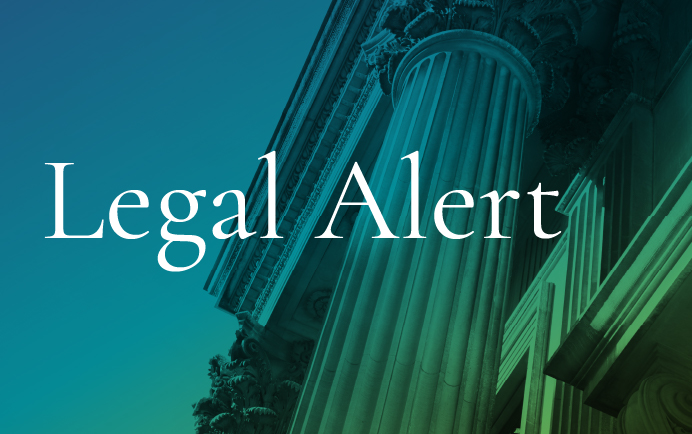4 Tips for Scaling Employee Communication
Today's modern, tech-enabled workforce compounds the challenge of employee communications. Everyone—you, me, and our employees—is more distracted than ever. While solving the problems of employee communication won’t be easy, it doesn’t mean we shouldn’t try.
NOTE: This post is a summary of the talk I gave at the HR Virtual Summit, which is available on-demand.
Context: The Sea of Change
Before we dive into the nitty-gritty of communication, we first need to elevate our awareness and set the right intention. This awareness involves acknowledging the external factors that impact our corporate cultures and make communication challenging, such as political and geographical divides, rising healthcare costs, and financial divides. The acknowledgment of what changes communication allows us to understand how politics, technology, and other divides skew the lens in which employees and consume and interpret messages.
We also need to consider how technology is changing the way we consume information. It has made the world more geographically distributed and digitally closer. This allows more companies to set up remote offices earlier in a company’s lifecycle compared to the past. And, too often, company expansion occurs before our systems, processes, and people are scaled.
HR Communication as Marketing
HR owns many portions of employee communication, which is a lot like marketing. Marketers must hold a wide variety of perspectives to ensure audiences understand and resonate with the messages communicated.
The marketing funnel is an important framework for how all of us make decisions. The point is to get your employees through the funnel.

When using the marketing funnel framework, you need to be mindful of two factors:
- Profile factors: These are any considerations you need to take into account from an employee profile (such a cultural, political, geographical, and generational cohort factors). This can be unique to your culture and your company.
- Form factors: These manifest as content and how that content is consumed. It is also interpreted by employees with different profile factors.
Both factors must be taken into consideration to drive employee engagement. The point is to get as many employees through each level is based on how well you consider the various factors and blend them with your messaging to engage and motivate employees to act.
Tip # 1: Awareness
Get to the punchline. Don’t over-message. You don’t need to communicate every single angle in a message when you’re trying to drive awareness. In any communication, always start with what you want your audience to take away from the message. Jot down your key takeaways before writing the entire message. Once you do this, the message you want to deliver may not be clear even to yourself.
Bake the punchline into the message if you can. Only mark the message as important if it truly is. You only get so many chances to mark something as “IMPORTANT,” especially if written in all caps.
If your company has a younger culture, insert more photos or videos into your content. Photos of well-known employees or even the CEO partaking in an event can help get everyone on board. Photos allow you to get to the punchline faster than any words, so use them wisely.
Employees either expect or are taken by surprise with an HR message. Expected messages are those employees receive with regularly-scheduled cadences. Unexpected messages involve getting to the punchline faster than the former.
Unexpected messages don’t necessarily mean one that comes out of the blue. But many employees are so deeply involved in their work that even timely messaging can feel like an unexpected piece of information. A good example would be open enrollment, which always seems to catch employees off-guard every year.
Answer these questions to help get to the punchline faster:
• What’s changing? Or what do I get?
• How does it affect me? Employees pay attention to the subject line and a short extract from the message.
• Where/from whom did the message it came from? The messenger is just as important than the message.
Tip # 2: Interest
Employees have received the message loud and clear. You’re now in the second level of awareness: interest. Any amount of information provided after awareness is essentially weighing both the positive and negative consequences, which determine whether you will act or not.
Marketers are keenly aware that your attention is precious. Treat your employees with the same level of awareness. If you’ve sent a message marked important, but there are no relevant consequences to the employees, then you’ve cried wolf without realizing it.
Interest also involves targeting each message to a specific audience. Ask yourself these questions to see who exactly is affected by your communications:
• Is the message relevant to all employees or just a subset?
• To narrow down the list, if you keep in mind those three different colleagues, what are the consequences of them acting or not acting on a particular message?
• Are the consequences the same or different for all of them?
The next biggest motivator to financial incentive is social pressure or fear of missing out (FOMO). A firm hand on the deadlines involved in your message strongly implies “missing out” as a consequence. Your team can burn out quickly without firm rules. Only break the rules when the situation calls for it, but never communicate flexible deadlines. Otherwise, the negative consequences lose their impact to motivate employees.
Tip # 3: Consideration
Ideally, you want your employees to ask “where can I learn more?” A little mystery drives curiosity and curiosity drives discovery. Discovery drives ownership of one’s actions. Your messaging should get employees to this consideration phase so they embrace and own their actions.
Keep in mind that to get employees’ consideration, you first need their attention. Remember that not all workers are in front of computers all day. We don’t want to lose these individuals in our messaging. You also need to be aware of generational preferences. Meet these employees in mediums they feel comfortable in and have easy access to.
Outline your considerations in an FAQ, which is essentially the decision matrix every employee goes through before they make a choice. You might have to reiterate the key value propositions and consequences because most don’t remember where the email was in their inbox. We live in a tech-enabled ecosystem and your message has probably been buried by others.
Balancing Human and Tech Messaging
One medium we can’t ignore outright is the human medium. We’re here to humanize the employee experience. You don’t want to overload all your messaging to a machine, but you also can’t do one-on-one’s with everyone
Draw a messaging map of the communications that can be posted or conveyed digitally and the ones that may require a human touch. Important and unexpected messages are best done at an all-hands or group setting to facilitate conversation and feedback.
Tip # 4: Conversion
The final ingredient is your communication timing. Apart from the medium, technology and data come into play when an employee is ready to act. The consideration phase can last as long as it can before the action—from a few seconds to a couple of weeks.
Make sure someone can cycle through the consideration phase and find the information when they’re ready. In the end, it comes down to when someone feels ready. Some people act early and decisively, while others act last minute. Time your messaging so you capture both the early and late decision makers.
Key Takeaways
Use the cheat sheet below whenever you're preparing an important message:

And, of course, if you need help scaling employee benefits communication with your employees, contact Lumity for a complimentary consultation. We'd like to learn more about your group and help you deliver a better benefits experience.





